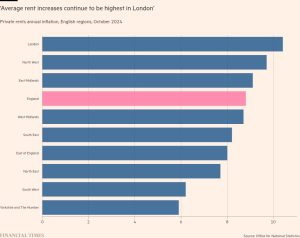Plotting a path to pension parity
In the growing debate over the gender pay gap, another contentious issue has emerged: the gender pension gap.
The gulf is wide: Fidelity International calculates that the average UK pension pot for working men aged 55 and over is £114,000, compared with £66,800 for women in the same cohort.
The smaller average pension pot for women can be explained by both the gender pay gap and the fact that more women drop out of full-time employment during their working lives than men, in order to act as primary carers for children and other family members.
In the UK, this can also affect the size of women’s state pension by reducing the number of years they can make National Insurance contributions. Although workers with gaps in their contributions can buy back years to tackle such shortfalls, many either do not realise this or cannot afford to do so.
Women also, on average, live longer than men, which means their fixed pension pots are likely to have to cover a longer retirement.
Qualification for workplace pension schemes can also be a problem for women as they are more likely to be on reduced hours, or working part time, than men.
In the UK, pension provider Now Pensions estimates 3mn women do not meet the £10,000 a year minimum earnings threshold for auto-enrolment in an employer’s pension.
At the lower earnings threshold of £120 a week, women do have the right to opt in and the employer must contribute in the same way as someone who was auto-enrolled. However, Claire Trott, divisional director of retirement and holistic planning for St James’s Place, says: “This may not be obvious to someone on a lower wage. Plus, joining a scheme and paying contributions is a very different scenario to full auto-enrolment, where the only hassle factor is opting out of the scheme.”
Emma Douglas, wealth policy director at UK insurance and pension group Aviva, agrees. She says auto-enrolment thresholds could be “exacerbating this problem”, and is urging the government to improve arrangements.
This gender pensions gap is not just a problem in the UK, either. Data from the OECD shows that, across 34 member countries, average aggregate pension payments for women are 24 per cent lower than those for men. This puts a higher proportion of women at risk of poverty in old age than men: 16.6 per cent, compared with 11.1 per cent. Similar conclusions were made in the World Economic Forum’s 2021 paper: How to fix the gender pension gap.
Even where women are saving, the OECD’s Joining Forces for Gender Equality report highlights gender gaps in asset-backed pension arrangements. On average, women aged 65 and older receive 26 per cent less income from asset-backed pension systems than men. In Japan, the gap is as high as 47 per cent; in Estonia it is 3 per cent.
In many of these countries, the reasons for gaps in private pension provision are the same as those in the UK: women’s lower participation in asset-backed arrangements, shorter careers, and lower average incomes.
But there are behavioural differences, too. Research by UK pension provider Aviva’s shows that 37 per cent of women in the country do not invest outside of any workplace pension, compared with 24 per cent of men. A study for Fidelity this year covering investors across six markets in the Asia Pacific region found women were worried, generally, about having less discretionary money to invest, and had lower risk appetites.
Other factors exacerbate these problems. The design of pension systems is not always gender-neutral: the OECD found arrangements in some countries, such as Bangladesh or Singapore, are still biased towards men, meaning there will always be a pension gap while societal norms remain.
In addition, a reliance on state provision in countries such as Malta and Vietnam has led to a lack of personal pension provision. However, as one Vietnam-based adviser says, demographic shifts to older populations and the inability of governments to keep shoring up state provision have thrown the need for personal provision into “stark relief”.
Some countries are now starting to tackle gender disparity in pension pots by addressing some of the causes.
Sophia Singleton, partner at XPS Pensions, explains how Australian workplace schemes must ensure more assets are maintained in equities if the pot value is below certain thresholds, to give smaller pensions a better chance of growing.
Jackie Boylan, head of investor servicing for Fidelity International, also points to Hong Kong’s mandatory provident funds system, which provides some additional help with contributions to lower-paid workers, and Japan’s new NISA scheme, which aims to encourage people to invest through tax breaks.
But individuals can take control. Rowan Harding, financial planner at UK investment adviser Path Financial, says women often delay financial planning until later in life, making it “harder to play catch-up”. So starting earlier is key.
Women should also review state pension entitlements and, where possible, backfill missing years. Regardless of state incentives or workplace provision, Boylan stresses: “It’s never too late or too early to make meaningful changes.”
OECD recommendations for closing the global gender pension gap
-
Promote women’s access and participation: Increase women’s access to asset-backed pension arrangements and encourage participation through automatic enrolment (such as in the UK and Australia), and financial incentives.
-
Improve contributions: Support higher and more consistent contributions through employer and spousal contributions, and offer financial incentives, especially for low-income women.
-
Adjust pension design: Adapt pension arrangements to women’s career patterns, ensuring flexibility in contributions, better portability of plans, and improved investment returns.
-
Address behavioural factors: Implement strategies to counteract women’s risk aversion in investments and encourage higher risk tolerance for better long-term returns.
-
Increase retirement income for women: Ensure that retirement benefits consider women’s longer life expectancy, promote unisex mortality rates for calculating pensions, and encourage survivor benefits.
Source: OECD
#Plotting #path #pension #parity







